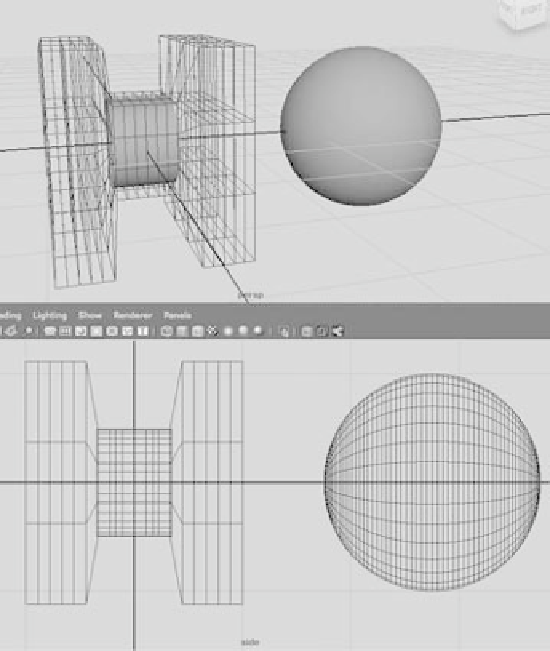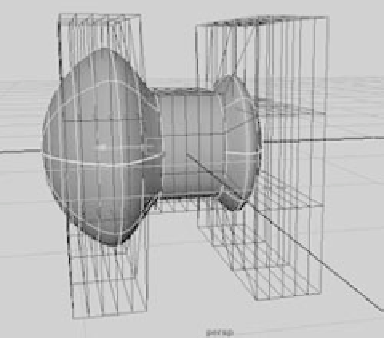Graphics Programs Reference
In-Depth Information
Figure 5.72
Squeeze in the lattice points to fit the cylinder.
Figure 5.73
Squeezing the balloon through the pipe using a
Lattice deformer
Subdivision Surfaces
Subdivision surfaces
combine the best features of NURBS and polygonal modeling and
are useful for intricate surfaces such as faces. Using subdivision surfaces, you can model
complex characters and create models from single primitives (as in polygonal modeling)
but with perfectly smooth surfaces (as in NURBS modeling).
Like lattices, subdivision surfaces
rely on varying levels of editing detail that allow you
to adjust a surface from a global level, where large parts of the model are modified, to a
micro level, where you have control over the most dense surface points.
Typical subdivision workflow begins when you create a simple polygonal mesh of
your model. The polygon is converted to a subdivision surface that you can edit using
any number of subdivision detail levels. More often than not, the resulting subdivision
surface is then converted back to a polygonal object for use in production. Subdivision
surfaces can also be converted to NURBS patches.


















